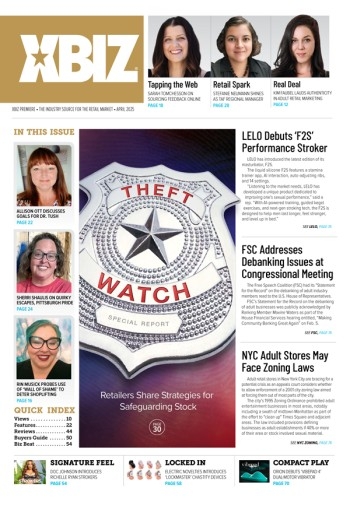This topic will always be an instigator of fights due to "religion of the person," but DRM does have a fit in the real world; because DRM its self is not restrictive, it's the DRM rules and platforms that make it restrictive and thus cause the end viewer to be upset. As we know the idea of any content based business is to allow the end user to ability to view the content and as a business owner, you want to restrict who, when, where and what they are trying to view. "Content is King" but if your end viewer can't enjoy it then no wonder why end users are upset and profit is lost.
So now let's get down and dirty with the three current types of DRM; there are others, but I am going to talk about the three that are most common in the industry.
The first is Windows Media DRM (WMDRM). This has basically been the longest running DRM and it works well. The bad side is that it does have its restrictions, such as it basically only works on PCs with Windows Media Player (WMP), due to the fact WMDRM is a Microsoft DRM technology and thus works with other Microsoft based technologies. Most say this is due to the fact the Microsoft only wants you to run Microsoft technologies. In Microsoft's defense this is only partly true, as the reason it does not work natively on MAC is due to Apple not releasing OS and Kernel level APIs or SDKs that would allow Microsoft to ensure the encrypted media stays encrypted. WMDRM version 1 worked on MAC; and there was a WMP for MAC, but since OS 10 and later editions, there is no more support for WMDRM.
WMDRM does have a good side: it works great on Microsoft OS's such as Windows XP, Vista and Windows 7 and as long as playback is in WMP, you can control play count, expiration values, begin times, and know how often a media file is being played with metering and many other DRM attributes. That allow you the content owner to be as restrictive or a relaxed on controls you invoke on your viewers. Microsoft has worked long on developing a schema that companies large and small can use in their business models.
WMDRM is not new and the concepts/usages of WMDRM are not new, but WMDRM is a good way to segway into Silverlight DRM powered by PlayReady Technology.
Silverlight, as we all know, is Microsoft's alternative to Adobe Flash and Adobe Air technologies. The Silverlight player allows playback on Windows, Apple and Linux; yes I said it works on MAC and Linux OS's not just Windows; and works in all major browsers: IE, of course, Firefox, Chrome, Safari and so on.
This technology is a great fit for VOD based sites as well as sites designed to have the viewer be online to enjoy the content.
Microsoft Silverlight was launched and version 1 did as it was supposed to, and was cross-platform. Silverlight 2 added DRM so that now business can offer "Content Access and Control" to online media though the Silverlight player. Silverlight 3, did not change DRM functionality, but it adds functionality to the Silverlight based apps. SL 4 will offer more of the PlayReady DRM attributes and offline playback.
Now the bad and the good about Silverlight DRM powered by PlayReady technology: in Silverlight 2 and 3, all licenses are "Non Persistent Licenses." This means that it only supports one DRM rule, "allow play," and when the browser is closed or a new media file is being played, a new license is required. This is not restrictive to the end viewer but unlike WMDRM you can not issue a license that lasts for "X" hours/days as well as the other DRM values that exist in WMDRM.
The good side of Silverlight DRM, unlike WMDRM, is that Silverlight DRM is based on the PlayReady DRM technology which used AES encryption a much higher level then what is used in WMDRM. In addition to this the media stays encrypted from server to Silverlight plug-in until it is decompressed during playback. Unlike stream encryption technologies, which only protect content as it is transmitted from server to player, Silverlight DRM protects the actual content inside a secure encrypted wrapper. Silverlight DRM's backend is a PlayReady DRM server so you have two options when DRM protecting your media. You can use the new PlayReady AES encryption or you can use WMDRM encryption; this is because the PlayReady server is backwards capable and can issue WMDRM licenses to the Silverlight player.
There is no Microsoft created standalone player like the WMP but there is no doubt that this will change in the future and Silverlight DRM will have the offline license ability.
A good marriage of these two DRM technologies is the use of WMDRM in conjunction with Silverlight DRM, so that a website that offers an online viewing option of the content will insure that all end customers on that site can enjoy the media no matter what computer type or browser they may be using. Additionally the website can offer a downloadable option for their PC based users, which are still a large bulk of the customers.
This enables the business to still have one media type and ensure no matter what platform or browser the viewer is using they can access and enjoy the content while still enabling the content owner to control their digital assets.
The third type of DRM I am going to talk about is the new kid to the block, Adobe DRM, also known as Adobe FMRMS. Adobe DRM is designed to be played back in the Adobe Media Player (AMP), or applications built on the Adobe AIR foundation.
The bad notes on Adobe DRM include that it is basically their first true DRM and the DRM rule base only allows for a value of how many days the media is valid, such as "X" days. Adobe DRM also supports only one business model easily, and that is membership based sites.
Currently Adobe DRM does not work with the embedded Flash player, thus all users need to have AMP installed or a site-specific AIR app. A little birdie did tell me the next version of Flash Player and Adobe DRM in Q1/Q2 2010 will address this issue.
On the good side, unlike WMP the AMP runs on both PC and MAC enabling the DRM to work on both; so business doesn't have to exclude the increasing volume of MAC based users.
To wrap up, DRM has come a long way and has been re-invented into content access and control; along with a new name, the inability for DRM to work cross-platform has been addressed. This was the key step in allowing DRM to truly be useful to companies large and small.
DRM like any tool in a toolbox, needs to be used properly and there is a "right tool for the job." Knowing the facts, the good and bad, now enables you to utilize the right DRM for your business, enjoying the benefits while sleeping at night knowing your clients are not going to leave because of an inability to access the content.
I hope this was both informative as well as beneficial, showing you how DRM is able to work with you and not against you as a business.






